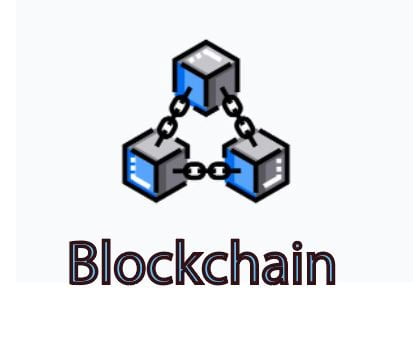Blockchain is a decentralized, distributed ledger that records transactions on multiple computers. It was first introduced in 2008 as the underlying technology for the cryptocurrency, Bitcoin.

How Does Blockchain Work?
Blockchain works by creating a chain of blocks, where each block contains a record of multiple transactions. These transactions can be financial transactions, such as the transfer of funds, or they can be any type of data that needs to be recorded and stored securely.
Each block in the chain is connected to the previous block, forming a chain of blocks that cannot be altered retroactively. This creates a permanent, unchangeable record of all transactions that have taken place on the blockchain.
To create a new block, a group of transactions is collected and a mathematical problem is solved using complex algorithms. This process is known as « mining. » When the problem is solved, a new block is added to the chain and the transactions contained within the block are verified as valid.
Once a block is added to the chain, it cannot be altered or deleted. This ensures the integrity and security of the blockchain, as any attempt to tamper with the data would be easily detected.
Blockchain technology is decentralized, meaning that it is not controlled by a single entity or organization. Instead, it relies on a network of computers, called « nodes, » to validate and record transactions. This decentralized structure makes it extremely difficult to hack or alter the data on the blockchain.
In addition to its security and decentralization, blockchain is also transparent, as all transactions are visible to everyone on the network. This transparency can help to increase trust in the system and reduce the risk of fraud.
Public Blockchains and Private Blockchains
Public blockchains and private blockchains are two types of distributed ledger technology (DLT) that differ in terms of their accessibility and control.
Public blockchains are decentralized networks that are open to anyone and allow for the creation of cryptocurrency transactions. They are transparent and anyone can participate in the network by running a node, validating transactions, and adding blocks to the chain. Examples of public blockchains include Bitcoin and Ethereum.

Private blockchains, on the other hand, are restricted networks that are only accessible to a specific group of people or organizations. They are often used by businesses to securely store and share data within a closed network. Private blockchains can be more efficient and faster than public blockchains, as they do not require the same level of decentralization and security. However, they are less transparent and are typically controlled by a single entity or a consortium of organizations.
Here are a few examples of private blockchains :
IBM Blockchain : IBM’s private blockchain platform is used by businesses to build and deploy secure, scalable, and high-performance blockchain networks. It allows for the creation of custom networks that can be used to track assets, verify identities, and facilitate cross-organizational collaboration.
Hyperledger Fabric : Hyperledger Fabric is an open-source private blockchain platform that is designed for enterprise use cases. It is modular and flexible, allowing organizations to build custom blockchain solutions that meet their specific needs.
R3 Corda: Corda is a private blockchain platform that is specifically designed for financial institutions. It enables banks and other financial organizations to securely record, track, and transfer financial assets.
Multichain: Multichain is a private blockchain platform that is used by businesses to create custom blockchain applications. It offers a range of features, including the ability to set up and manage multiple networks, and the ability to customize the level of access and control for different users.
In general, public blockchains are more secure and transparent than private blockchains, as they are decentralized and open to all participants. However, private blockchains can be more suitable for certain use cases, such as when a high level of privacy and control is required. It is also worth noting that hybrid blockchains, which combine elements of both public and private blockchains, are also possible.
How Is Blockchain Used ?
Blockchain technology has the potential to be used in a wide range of applications. Here are a few examples of how blockchain is currently being used :
Cryptocurrencies: The most well-known use case for blockchain is the creation of cryptocurrencies, such as Bitcoin and Ethereum. These digital assets use blockchain technology to record and verify transactions, enabling peer-to-peer exchange without the need for a central authority.
Supply chain management: Blockchain can be used to track and verify the movement of goods through the supply chain. By creating a transparent, immutable record of all transactions, it can help to increase efficiency, reduce the risk of fraud, and improve supply chain visibility.
One example of a company using blockchain for supply chain management is Walmart. The retail giant has been working with IBM to develop a blockchain-based traceability system for its food supply chain. The system allows Walmart to track the movement of goods from the farm to the store shelf, helping to improve food safety and reduce waste.
Identity verification: Blockchain can be used to verify and store identity information, such as digital identities, personal documents, and even biometric data. This can help to reduce identity fraud and improve security.
Voting systems: Blockchain technology has the potential to revolutionize the way we vote by creating a secure, transparent, and immutable record of all votes. This can help to increase the integrity and fairness of elections.
Real estate: Blockchain can be used to record and verify real estate transactions, including the transfer of ownership and property titles. This can help to streamline the process, reduce the risk of fraud, and increase efficiency.
Disadvantages of Blockchain
While blockchain technology has the potential to bring many benefits, there are also some disadvantages to consider:
Scalability : One of the main challenges with blockchain is scalability. As the number of users and transactions on the network increases, it can become more difficult to process and verify all of the data in a timely manner. This can lead to slower transaction speeds and higher fees.
Energy consumption: The process of mining new blocks, which is required to validate transactions and add them to the blockchain, can be energy-intensive. This can make it costly and environmentally unsustainable to operate a blockchain network at a large scale.
Regulation: Blockchain technology is still in its early stages and there are many regulatory issues that need to be addressed. In particular, the use of cryptocurrencies, which are based on blockchain technology, has raised concerns about money laundering and other illegal activities.
Lack of standardization: There are currently many different blockchain platforms and technologies available, which can make it difficult for businesses to choose the right one for their needs. A lack of standardization can also create interoperability issues, as different systems may not be able to communicate with each other.
Security risks: While blockchain technology is generally considered to be very secure, there is still a risk of attacks or vulnerabilities. For example, there have been instances of cryptocurrency exchanges being hacked and funds being stolen.








Comment installer Nginx on Rocky Linux 9
Installer et configurer Ansible sur Rocky Linux 9
Empêcher les utilisateurs sudoers d’exécuter des cmds sudo
nmtui : Configurer une adresse IP sous Linux
Fail2Ban : How to protect Linux services